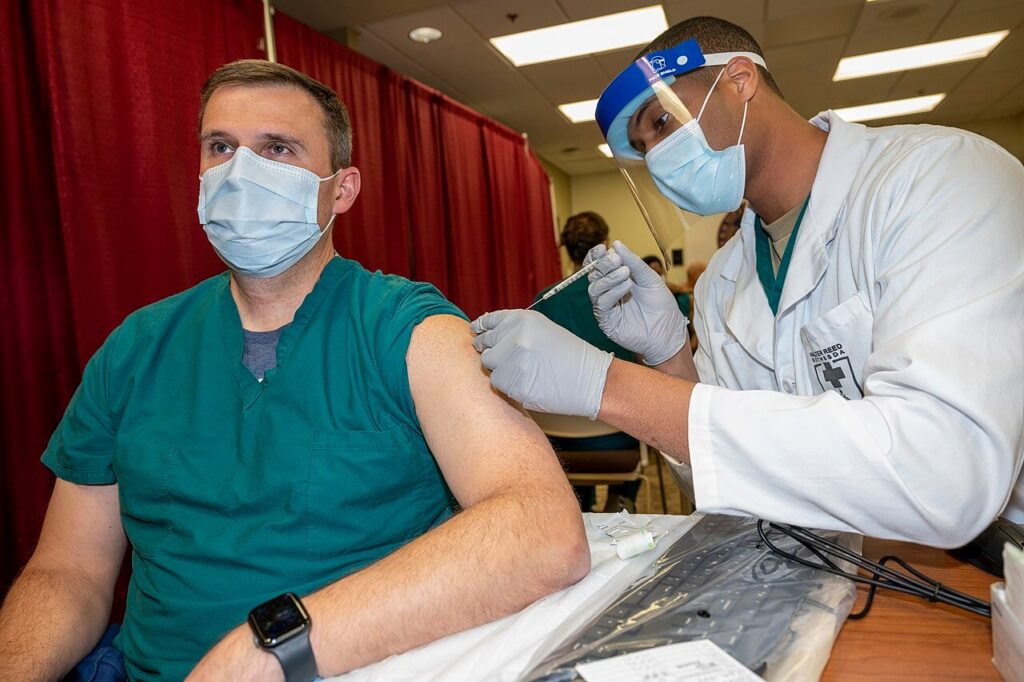
Pamela Cruz. Peninsula 360 Press [P360P].
People from the Latino and Afro-descendant communities have been the most affected during the last year due to the COVID-19 pandemic, the deaths are progressing and the light at the end of the tunnel that could provide vaccines against the virus seems increasingly distant, as immunizations to these sectors are advancing at a very slow pace.
This means that these groups, as well as the Asian group, represent a much lower proportion compared to the Caucasian ?white? race in terms of being able to receive the vaccine.
The various Centers for Disease Control and Prevention (CDC) reported that more than 60 percent of those vaccinated were white, while only 11.5 percent were Latino, 6 percent were Asian and just over 5.0 percent were of African descent.
This information is part of data obtained by the CDC during the first month of the COVID-19 vaccination campaign in the United States, where about 13 million people have been immunized.
And the numbers of people in these communities who could die from SARS-CoV-2 could grow increasingly because many of their jobs are considered essential and many may have pre-existing conditions.
According to the head of the Joe Biden administration's Health Equity Task Force, Dr. Marcella Nunez-Smith, an equitable vaccination program cannot be assured without data to guide policymakers, after it was learned that of the 13 million people vaccinated, the race and ethnicity of just under half are known.
"CDC will soon release additional data regarding race and ethnicity and vaccine uptake. But I'm concerned about how far behind ??we are," she added recently.
In response, Dr. David Hayes-Bautista, director of the Center for the Study of Latino Health and Culture at the UCLA School of Medicine, said in an interview for the nonprofit organization, "I've heard that the Latino community has a lot to learn from the Latino community. Democracy Now that "what we're seeing illustrated is approximately 150 years of medical malpractice".
The specialist stressed that "these disparities did not appear suddenly nine months ago at the beginning of the pandemic, as they have been built, decision by decision".
Given the 1,000 percent increase in Latino deaths due to COVID-19 reported in Los Angeles, the specialist noted that all populations of color have much higher mortality rates than non-Hispanic whites, "which tells us a lot about where the medical resources are and where they are not.
He added that the coronavirus struck the Latino sector quickly because as essential workers who have kept the state going - the farm workers who kept the state fed, the truck drivers, the packinghouse workers, the food industry workers, etc. - they worked during the early days of the pandemic and were not provided with personal protective equipment. "They rarely have health insurance anyway, with very low wages."
"It's not because they're Latino that the rates are so high. It's because they're in those occupational and living arrangement spaces that the coronavirus loves. A lot of exposure, a lot of people, boom, there it is. And we've been seeing this for nine months," Dr. Hayes-Bautista noted.
Through a virtual interview, the prominent professor said that "unfortunately, Latinos and other populations of color are paying the price for this maldistribution and limited access to medical resources, in any case. So it's just making a bad situation worse.
In that regard, he explained that the vaccination rate is "very, very low" in California among Latinos and most populations of color.
"Overall, between Oct. 27 and Jan. 27, the overall state death rate for Latinos has doubled. However, it started in October five to six times higher than white. And in January, it's still five to six times higher than white. So compared to whites, yes, the death rate is absolutely huge," he said.
Dr. Hayes-Bautista cautioned that the peak in Latino infections and deaths may not yet have been reached.
On the other hand, he noted that the lingering effects of the Trump administration still need to be dealt with - as recently as last Sunday, at a vaccination event at Dodger Stadium, a group of anti-vaccine supporters of the former president disrupted and shut down that effort for more than an hour as they tried to persuade people not to get vaccinated.
For the Latino population that is undocumented, Hayes-Bautista said access to the vaccine is confusing because, as many times, the information is only in English and many of them are not fluent in the language.
"The message, again, is terribly confusing. Is it free? Is it not? Are you going to a county facility? Are you going to a private facility? Will you get a bill? Will you have insurance? Will you be considered to have used public facilities if you get a vaccine? The messages are very, very confusing."
He also noted that Immigration and Customs Enforcement (ICE) has been sending COVID-19-positive refugees back to their countries of origin -- Mexico and Central America -- thus seeding the pandemic in countries with the fewest resources to respond to the pandemic.


